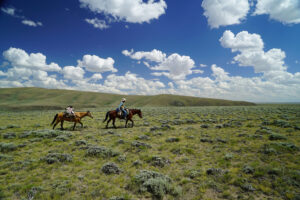Wyatt Earp: A Biography of the Legend, Vol. II, Part 1: Tombstone Before the Earps,
by Lee A. Silva and Susan L. Silva, Sunset Beach, Calif., 2010, earpbooks@aol.com, $69.95.
The biography that is a whole lot more than merely Wyatt Earp’s story continues. Lee Silva’s 995-page Vol. I: The Cowtown Years created a stir when it came out in April 2002, and Earp and Tombstone fans have been stirring for eight years, waiting impatiently for the second volume. The wait is over. Truth be told, while the latest book in the series packs a wallop, a new wait has begun. It’s like those DVD companies that have delivered the first season of a TV program and now come out with a “Season 2, Part 1” instead of offering all the episodes of the second season in one package. Yes, Silva’s long-awaited second volume will cover the gunfight near the O.K. Corral as well as the testimony, assassinations and vendetta that followed, but that will come in Part 2. That might be a disappointment to some, and author Lee Silva (who shares a byline with Susan Silva, his late wife and contributor) admits at first glance it might seem he has “strayed off the beaten path.” But in practice, most of these would-be readers will change their tune once they take a gander at 559 glossy pages full of crisp photos and in-depth coverage of Tombstone.
As most other books and articles about Wyatt give short shrift to what happened in and around Tombstone before he and brothers Virgil and Morgan came to town, Part I of this second volume provides information that will be new to many gunfighter and lawmen aficionados. A few of Silva’s illuminating points: Lush cattle-grazing land near Tombstone brought to the area not only the infamous rustlers (so-called Cowboys) but also honest cattlemen—all before silver was discovered; Chiricahua Apache attacks greatly affected early life in Tombstone, and if not for one such attack, Tom and Frank McLaury would not have been in Tombstone on October 26, 1881 (the day of the big fight with the Earps and Doc Holliday); and the original mining camp of Tombstone was not situated where Tombstone is today.
At the same time, do not be misled by Part 1’s subtitle. Readers will find plenty about Wyatt Earp here. Chapter 1, “Old Stories Never Die,” includes a look at his legend and the early anti-Earp and proEarp historians. Chapter 11 covers “Wyatt Earp and Wells, Fargo.” According to Wyatt’s own testimony, he came to Tombstone in October 1879 as both a deputy U.S. marshal and a Wells, Fargo private man. And Chapter 17, titled “The Earps Cometh,” offers a taste of things to come. Another chapter deals with Josephine Sarah Marcus and lawman Johnny Behan, the former to become Wyatt’s lifetime companion, the latter to become a badge-wearing enemy. Josie fans also won’t want to miss Appendix A, which sizes up various purported photos of her, including the controversial nude “Kaloma” photograph. Appendix B provides an update of the legendary long six-shooter known as the Buntline Special. For a good handle on some of the fellows not fond of Wyatt, see Chapter 12, “Curly Bill, Ringo and Billy”— the first two being outlaws who died mysterious deaths and the last being Billy Breakenridge, onetime deputy sheriff of Sheriff Behan and author of Helldorado.
Originally published in the August 2010 issue of Wild West. To subscribe, click here.




